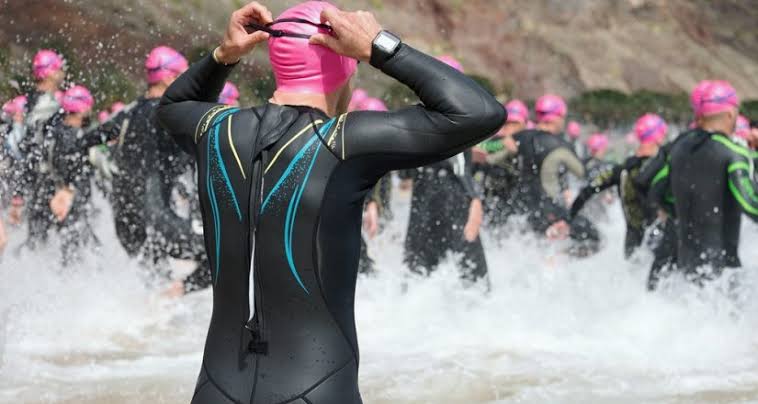Do I Need a Swimming Wetsuit for Open Water?
Swimming in open water offers an exhilarating experience, but it also presents unique challenges. One common question among swimmers is whether a swimming wetsuit is necessary. While not always essential, a wetsuit can provide significant benefits depending on the conditions and individual preferences. In this blog, we’ll explore the factors to consider, the advantages of wetsuits, and situations where you might not need one.
Factors to Consider When Deciding on a Swimming Wetsuit
Water Temperature
The temperature of the water is a key factor in determining whether you need a wetsuit. If the water is below 18°C (65°F), a wetsuit is highly recommended to keep your body warm and prevent hypothermia. In colder conditions, wetsuits with thicker neoprene (3mm to 5mm) provide excellent thermal insulation.
Swimming Distance
For longer swims, the benefits of a wetsuit are amplified. The added buoyancy helps conserve energy by maintaining an optimal body position, reducing fatigue over extended distances. Even experienced swimmers can benefit from this extra support.
Skill Level
Beginners often find wetsuits beneficial because they provide buoyancy and improve confidence in open water. Advanced swimmers might use wetsuits to enhance performance or meet race requirements.
Event Rules
If you’re participating in a triathlon or an open-water race, check the event regulations. Many events allow wetsuits within specific temperature ranges, and using one could give you a competitive advantage.
Benefits of Using a Swimming Wetsuit
Improved Buoyancy
Wetsuits are designed to lift your body in the water, helping you maintain a horizontal position. This reduces drag and allows for more efficient swimming, especially in rough or unpredictable waters.
Thermal Protection
In cold water, a wetsuit traps a thin layer of water between the suit and your skin, which your body warms. This helps maintain your body temperature, reducing the risk of hypothermia and ensuring comfort during your swim.
Hydrodynamics
The sleek, smooth surface of a swimming wetsuit reduces water resistance, helping you move faster with less effort. For competitive swimmers, this can result in better race times.
Safety
Wetsuits improve visibility in open water with bright colours or reflective elements, making you easier to spot. They also provide a layer of protection against jellyfish stings, scrapes, and minor injuries.
Situations Where a Wetsuit May Not Be Necessary
Warm Water Swimming
If the water is warm (above 22°C or 72°F), a wetsuit may be unnecessary and even uncomfortable. In these conditions, swimmers often prefer the freedom of movement without a wetsuit.
Short Distances
For brief swims, the benefits of a wetsuit might not outweigh the effort of putting it on. A quick dip or short training session in mild conditions usually doesn’t require a wetsuit.
Personal Preference
Some swimmers enjoy the natural feel of swimming without a wetsuit. If you’re accustomed to open-water swimming and comfortable in the conditions, a wetsuit might not be necessary.
Choosing the Right Wetsuit for Open Water
Water Conditions
Select a wetsuit based on the water temperature and environment. Thicker suits provide more warmth, while thinner suits offer flexibility for warmer waters.
Fit and Comfort
A snug fit is essential to prevent water from entering the suit while allowing full range of motion. Ensure the suit fits well around your shoulders, arms, and chest for optimal performance.
Practicality
For triathlons, consider wetsuits that are easy to put on and take off to save time during transitions. Look for designs that balance performance and convenience.
Alternatives to Swimming Wetsuits
Neoprene Accessories
For mild conditions, neoprene swim caps, gloves, and booties can add warmth without needing a full wetsuit.
Thermal Swimwear
Thermal swim tops or suits provide insulation and are ideal for those who prefer less coverage while staying warm.
Expert Tips for Swimming Without a Wetsuit
- Acclimatise Gradually: Start with shorter swims in colder water to build tolerance.
- Use Safety Gear: Brightly coloured swim caps and safety buoys increase visibility in open water.
- Swim with a Buddy: Having a companion adds safety and confidence.
Wrapping Up
Whether you need a swimming wetsuit for open water depends on factors like water temperature, distance, skill level, and personal preference. Wetsuits provide buoyancy, warmth, and safety, making them an excellent choice for many open-water swimmers. However, in warm water or for short distances, you may find a wetsuit unnecessary. Evaluate your specific needs and the conditions to make the best choice for your swim.






